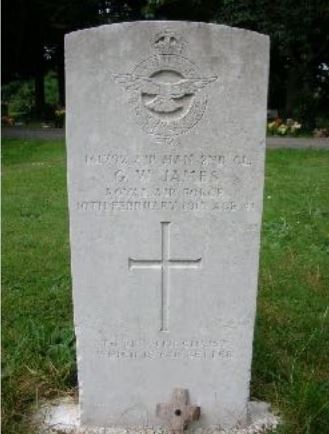Royal Air Force

According to his Royal Air Force (RAF) service record (National Archives AIR 79/1456/161792) Gilbert William James as born on 8 June 1877. However, the Register of Births indicates that his birth was in 1878 and therefore it is likely that 8 June 1878 is the actual date. The fact that he is shown as having been aged two at the time of the March 1881 Census gives credence to this. He was born in Upleadon, near Gloucester to Gilbert Thomas and Emily Ann James.
In 1901 his mother was living at 17 Arthur Street, Gloucester. Gilbert’s name was originally entered on the census form (showing his occupation as a baker’s driver) but this was ruled through, as he was probably not present on the night of the census. His location has yet to be determined.
His RAF service record states his occupation as a draper’s porter and the date of his enlistment as 26 April 1918. He was then almost 40 years of age. Perhaps a clue as to the reason for his call to military service at such an advanced age is contained in a note in the service record: a medical board classified him a Grade 3 upon enlistment. He was obviously not in prime physical condition but by that stage of the war the need for manpower was so great that men previously seen as unsuitable for military service were being called up to undertake non-combatant roles.
Gilbert’s duty appears to be that of an officer’s batman (or servant) and after his initial posting to a unit given the initials ‘RD’ he was transferred to the Wireless Telephone (or Telegraphy) School at Chattis Hill, near Stockbridge, Hampshire on 2 May 1918.
He appears to have remained here until his death at Blandford Hospital, Blandford Forum, Dorset on 10 February 1919. He was aged 40 or 41. The cause of death is unknown but likely to have been influenza, which was rife at the time.
It would appear that his mother had moved from Gloucester to 17 East Street, Taunton by the time of his enlistment (she is down as his next of kin) but he was brought back to Gloucestershire for burial. Why the churchyard at Barnwood Parish Church was chosen is not known but his grave is now marked by a CWGC headstone.
Researched by Graham Adams 5 May 2013
